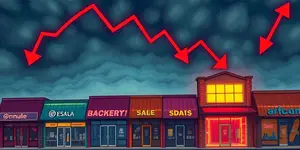
In today’s interconnected world, social media platforms have evolved into powerful catalysts, capable of igniting positive, negative, or neutral tone en masse and fueling market movements that defy traditional analysis. Investors, brands, and regulators now sift through vast data streams to discern patterns and anticipate sudden price surges.
From viral Reddit threads to influential tweets, collective sentiment can translate into real-world financial rallies, creating new paradigms in volatility and market behavior.
Sentiment analysis applies natural language processing and machine learning to quantify the emotions expressed in online discussions. By assigning numerical scores to text from platforms like Twitter, Reddit, WhatsApp, and Telegram, analysts can gauge prevailing moods and forecast potential market reactions.
Studies show that accuracy rates of over 55% in predicting S&P 500 movements are achievable using tweet sentiment models, with recall measures reaching as high as 92% in peak conditions. This predictive edge highlights how digital chatter complements traditional indicators like earnings reports and economic data.
Online narratives can escalate swiftly. A single viral post, meme, or rumor may prompt thousands of retail traders to buy or sell simultaneously, decoupling price action from company fundamentals. This phenomenon was starkly evident during the GameStop saga of January 2021.
On Reddit’s WallStreetBets, a grassroots movement coalesced around a short squeeze, sending GameStop’s stock up nearly 1,700% in days. Institutional short-sellers incurred significant losses, while retail investors made global headlines. Similarly, Elon Musk’s tweets about Dogecoin and Tesla repeatedly triggered price swings of 10–50% within minutes, demonstrating the sway of influential voices.
Such episodes underscore how viral attention economy can create herd mentality, amplifying volatility and reshaping risk assessments.
Below is a summary of high-impact social media-driven rallies that transformed expectations and market dynamics.
Artificial intelligence and natural language processing enable traders and analysts to process millions of posts in real time. Modern platforms assign sentiment scores to tickers, brands, or topics, flagging potential rallies or panics before traditional metrics respond.
Adoption of AI-driven sentiment analysis tools has surged among hedge funds, retail traders, and marketing teams seeking an informational edge. These solutions can:
By incorporating these insights into trading algorithms and risk models, market participants can navigate sudden swings more confidently and position themselves ahead of social-driven rallies.
While democratization of market influence offers new opportunities, it also introduces significant risks. Misinformation, rumor-driven speculation, and emotional trading can undermine market stability and harm uninformed investors.
In response, regulators worldwide have begun to adapt. Organizations like SEBI in India and the SEC in the United States are exploring:
These measures aim to strike a balance between innovation and investor protection, ensuring that viral narratives do not erode market integrity.
Brands and public companies must now engage proactively with online communities, addressing rumors, managing reputation, and shaping narratives before they spiral. Crisis management strategies increasingly include real-time sentiment tracking and rapid response teams to counteract negative trends.
Investors, meanwhile, should view social sentiment as a complementary indicator rather than a standalone signal. Combining traditional fundamental analysis with digital sentiment insights can enhance decision-making and risk management, especially in fast-moving sectors like technology and cryptocurrency.
With nearly 5 billion people active on social media, the scale and speed of sentiment propagation will only intensify. Future developments may include:
As digital and financial ecosystems merge, understanding and harnessing social media sentiment will be critical for navigating the next generation of unexpected market rallies.
Social media sentiment has emerged as a formidable force in modern markets, capable of sparking rallies that defy conventional logic. By leveraging advanced AI tools, adopting robust governance frameworks, and integrating digital insights with traditional analysis, brands and investors can harness this phenomenon to their advantage.
Ultimately, those who master the art of sentiment-driven strategies will be best positioned to thrive amid the unpredictability of tomorrow’s markets.
References













